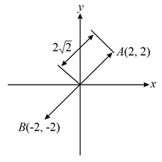B M Sharma Solutions for Chapter: Linear And Angular Simple Harmonic Motion, Exercise 5: DPP
B M Sharma Physics Solutions for Exercise - B M Sharma Solutions for Chapter: Linear And Angular Simple Harmonic Motion, Exercise 5: DPP
Attempt the free practice questions on Chapter 5: Linear And Angular Simple Harmonic Motion, Exercise 5: DPP with hints and solutions to strengthen your understanding. Chapterwise/Topicwise Daily Practice Problems (DPP) Waves & Thermodynamics JEE Main & Advanced solutions are prepared by Experienced Embibe Experts.
Questions from B M Sharma Solutions for Chapter: Linear And Angular Simple Harmonic Motion, Exercise 5: DPP with Hints & Solutions
The displacement of a particle varies with time as, (in ). If its motion is SHM, then, its maximum acceleration is,
A particle is acted simultaneously by mutually perpendicular simple harmonic motion and . The trajectory of motion of the particle will be,
A disc of radius and mass is pivoted at the rim and is set for small oscillations. If a simple pendulum has to have the same period as that of the disc, the length of the simple pendulum should be,
A particle of mass executes SHM in -plane between points and under the action of force, . The minimum time taken by the particle to move from to is . At , the particle is at and . Then, as function of time is,

The displacement of a particle varies with time according to the relation, .
Three simple harmonic motions in the same direction having the same amplitude and same period are superimposed. If each differ in phase from the next by , then,
A function represents SHM,
The position of a particle wrt to the origin varies according to the relation, . Which of the following is/are correct about this motion?
